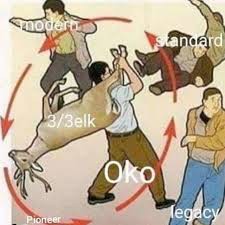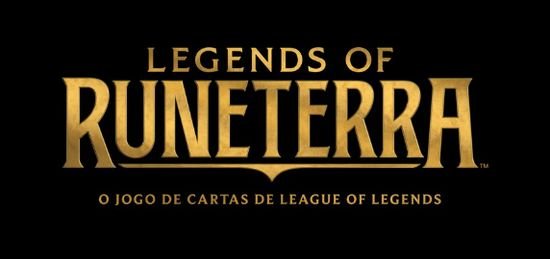Once again the new Wizards of the Coast (WotC) expansion set makes a drastic change in the formats that we love so much. Ikoria, Lair of Companions Behemoth brought this new mechanic, which practically means "start the game with an extra card", as long as your deck meets certain requirements. This card advantage made a big impact on non-rotating formats, especially with Lurrus of the Dream-Den, which I would say is the card that defines Modern at the moment. Sam Black, a pro player recognized by his deckbuilds, dedicated an entire article explaining why this mechanics is bad for the game.
This pattern of revolt in the magic community has been repeated with each expansion release for almost a year. And it all comes from a key point, a misinterpretation from Wizards of the Coast (WotC) to what is the better for the non-rotating format's player base. And that is what I will cover in this article.
WHEN IT ALL STARTED
Many consider Modern Horizons (MH1) to be the expansion set in which the design of the cards started to go wrong. In fact, the impact on non-rotating formats was immense, with several cards becoming staples on famous decks and others causing new decks to emerge and old ones to become obsolete. However, we had many harmful cards, to the point that MH1 had a card banned in each of the non-rotating formats in which it is valid: Hogaak, Arisen Necropolis in Modern, Wrenn and Six in Legacy and Arcum's Astrolabe in Pauper (probably would be in Legacy too if banlist was by popular vote hahahaha).

Although I think this is a big design error, I will give the benefit of the doubt to WotC in my analysis, since MH1 was an expansion set with a new idea to release cards directly to Modern. Theoretically, they were stepping into new territory here and as it is an expansion set with a proposal to be released every one or two years, players would have time to adjust to the new format after possible bans (which in fact occurred). In the standard expansions, that they release every 2~3 months, this will not happen and they will continue to release one to three cards relevant to the eternal formats. So everything would be fine and life goes on, right?
Well, we got a big No with the release of War of the Spark, which happened one month before MH1.
Cards like Teferi, Time Raveler, Karn, the Great Creator and Narset, Parter of Veils became necessary on several Modern and Legacy decks. Teferi in particular was a card criticized for its design that annuls mechanics like Suspend, Cascate and even eliminates the drawback of cards like Spell Queller. Following MTG's timeline we had Veil of Summer at Core Set 2020, yet another card criticized for its design that in practice counter spells and abilities with a better efficiency than the blue color, which is the one suppose to do it at the best level. And the last straw was with the release of Oko, Thief of Crowns in Throne of Eldraine, which "elkified" MTG into a great meme.

After receiving heavy criticism about the state of Standard with Oko, WotC was forced to ban it along with Veil of Summer and Once upon a Time (another card that later revealed to be a problems in non-rotating formats and had to be banned in Modern and Pioneer). Followed by the ban announcement, Bryan Hawley (from WotC's Play Design Team) wrote an article portraying the problem. During his justifications, we were presented to a new design methodology, called F.I.R.E., that the Design Team decided to adopt for its process of creation. Basically they explained that starting in Guilds of Ravnica the power level of the cards would be increased, as they thought it was the best for Standard. But what about the best for non-rotating formats?
WOTC'S STANCE
Over the past year, the phrase that echoed among redditors was "guys... they already said they don't playtest for eternal formats" (ok... actually it was "WotC is destroying Magic!!", but this one we hear since MTG was created hahahaha). I consider not playtesting a huge mistake, but I will leave that discussion for my next article. So let's assume, for the sake of this analysis, that WotC is right in that stance, and that in fact taking into account 25+ years of cards (or 15+ years in the case of Modern) limits the space for innovative designs, and that they don't want Standard to always be "more of the same". Sure, no problem. We will solve the problem by banning possible cards that happen to be a problem and eliminate in the design those that we don't even need to test to know that they will be problematic in eternal formats. After all, there are cards that just by reading it we already know will make Modern or Legacy a complete mess, right?

I'm sure you, the regular player of Friday Night Modern in your LGS, already said a big No while reading my question, remembering the traumas that this zombie tsunami caused while drowning your favorite format. Well, here again I’m going to play the devil’s advocate and defend Wizards. Don't hate me, please. And keep reading because we are reaching the "climax" of the analysis ;)
Hogaak was a huge problem for Modern because it was the card that gave absurd consistency to BridgeVine, a deck that appeared on Modern right after Stitcher's Supplier was released. This was a deck that was successful in August 2018 after Jacob Nagro popularizes it by taking 7th place on the Pro Tour 25th Anniversary using the list , but a few months later, with the increase of Surgical Extraction and Leyline of the Void as a meta response to the release of Arclight Phoenix and Creeping Chill, it became a vanished deck from the meta. For someone from WotC's Play Design to identify this problem without testing the card, they would need a little deeper knowledge of the format, at least more than knowing the staple cards and decks of the format like Jund, Humans, Death Shadow, Tron, Burn, etc. So it’s not a card that with just one read you say it’s going to destroy the format. So I leave here one more benefit of the doubt for Wizards.
I could go on playing the devil's advocate for cards like Wreen and Six, Arcum's Astrolabe, and all the other problematic cards from last year, but I won't do that because I don't want this negative karma for me hahahaha. And also because in 2020 they released a card that breaks completely with all the arguments I used above.

Breach resembles a card that made history in Magic as an example of what "broken" means: Yawgmoth's Will. If you have the history of banned cards at your disposal, it is assumed that you will at least take some precautions when releasing a pseudo-copy of a problematic card to promote your new set's mechanic. Because otherwise it would be the same as me releasing a new Gitaxian Probe costing 2 Phyrexian mana instead of one and thinking that this solves the problem. In addition, you don't need to have a thorough knowledge of Legacy to know about the existence of Lion's eye Diamond. It is not an obscure card for a specific deck, but instead a staple on multiple decks of the format.
It was such an obvious mistake that at the very first opportunity they banned the card from Legacy (which seldom happens in this format). As I said, this card breaks all the arguments that I used in the case of Hogaak. And makes it clear that the phrase should not be "Wizards does not test eternal formats", but instead "Wizards does not care if there will be problems with eternal formats. If the card will cause problems, but it is good for the Standard design, so be it".
SO, WHAT IS THE KEY POINT?
Quick answer: The metric of how much the card is being used is not the correct one for non-rotating formats. One of the reasons we like them is that they don't rotate, and the release of a single card may be enough to give a little shake in the metagame and bring new play patterns that innovate the gameplay experience. Now moving to the long answer.
In the reddit post Modern no longer resembles a non-rotating format the redditor VintageJDizzle made an analogy that I really liked. He compared Magic to music to explain why Modern looks like a rotating format like Standard today. The cards released are like songs from WotC albums, and if everyone is "listening" to the new one, it is because the expansion set was a success. The problem is that we like our favorite bands not only for what they do, but for what they have done throughout their history. I would not like to go to a concert of my favorite band and hear only the songs from the last album. I want to sing along with the classics too. Otherwise, it would fell that I'm not watching the band I've always loved to hear and watch.
And with MTG this is what's happening. You see the top32 decklists of the Modern and Legacy tournaments and the images are always from the cards released in the last 10 to 12 months. It gives the feeling that for you to have a minimal competitive chance in the game, you have to include about 20 new cards in your 75 (or 95, right Yorion, Sky Nomad? ...). This is very frustrating for those who have had their pet deck for years, who always cultivated it and had fun when they released a new card that was going to be a good addition that they could test 2 or even 3 on the list. And out of nowhere you see that you either have to buy 20 new cards and play with version 2.0 of your deck, or just give up on it. It is as if the game had turned into something completely different during these 10 to 12 months.
Non-rotating formats have always been famous for their stability. Drastic changes were never a good proposition. And the gradual changes, for example when a new deck appeared or an existing deck gained a new toy that made it stronger, already gave that little shake in the format that brought the fun of unpredictability back.
Following the VintageJDizzle analogy, we are not listening to all these new songs because we like them. We are listening because we are being forced to...
CONCLUSION
This article brought a review of key points in the history of Magic in the last 10 to 12 months to support my opinion about the problem in the way that WotC is analyzing what is success for a new expansion, and how it affects the playerbase.
For my next article, I will talk about what steps WotC and the playerbase itself may take to solve this problem. I will also address attitudes that are already being taken on this issue.
I hope you enjoyed it, and I look forward to your feedback. Stay awesome eternal players!!













— Comments 0
, Reactions 1
Be the first to comment